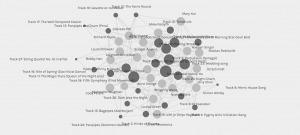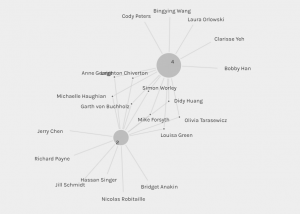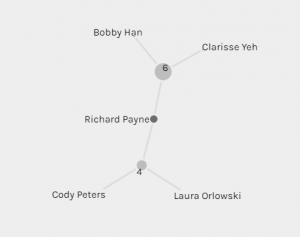Task 12 Speculative Futures
Dr. Shannon Vallor of Clara University in a 2018 presentation entitled Lessons from the AI Mirror describes AI as both a mirror and gasoline. That is to say that it is both a reflection of human values and interactions as well as acting as an accelerant. In 2023 these themes are now much more common knowledge; however, it is still hard to imagine where this will lead us beyond a few years horizon. In the first chapter of the book Speculative Everything, authors Anthony Dunne and Fiona Raby observe that somehow, we seem to have slipped away from dreaming and settled for hope. The challenge is to reinstate dreaming future realities through speculative design. One such creative exercise of the imagination can be played out through the game Thing From The Future by Situation Lab. In this exercise we are given some variables in a future and asked to come up with a scenario that could exist based on these factors. The world of science fiction has always fascinated me as a place to freely play with known real world factors and throw those into a sandbox where anything is possible in terms of how they could play out in the future. This is perhaps more important for humanity now than ever before as we see technological change accelerate with both incredible opportunity and risk. For task 12 we are given a speculative future in the form of a prompt and asked to dream up a vision.
Prompt:
Describe or narrate a scenario about a corporation found two generations into a future in which order is deliberately coordinated or imposed. Your description should address issues related to communication and elicit feelings of dread.

Figure 1. Adobe AI, Payne, 2023, D&D inc, (In 2080 there is a mysterious AI corporation based in Tokyo), https://firefly.adobe.com/
In 2080 there is a mysterious company referred to by some as DHD&D Inc. or D&D for short. The full acronym it is rumored stands for Don’t Hope, Dream and Design. Most people don’t believe the company exists and believe it is a conspiracy to explain sudden incongruent behaviours of powerful people or black swan events that cannot be explained but alter the course of the future. There was a known company in 2065 named DHD&D Inc. set up as a PR consulting network based in Singapore, Bangalore, Tel Aviv, and London. The company claimed to be a consulting company and took on clients ranging from ultra rich housewives to powerful politicians. They claimed to employ powerful AI that could analyze every aspect of a client’s digital life including all those around them whom they sought to influence and produce for that client a blueprint to achieve their desired outcome, which is legal. In 2050 however the company went dark after a string of unusual scandals which I won’t go into involving the CEO and other execs. Through media reporting the public widely accepted the villainy of these people, the execs were hunted down by the CIA and brought to the global cyber and morality crimes court and then the story went quiet. As there is much secrecy around the ‘court’, it is only assumed were sentenced to work on the moon colony titanium mining operations. There is a great demand for highly technically qualified personnel to operate the autonomous drone mining operations on the moon, so many white-collar criminals end up on the undesirable moon colony. Now, it 2080 investigative journalist-content creators have uncovered through recently declassified CIA documents that DHD&D was under investigation and the scope of their business went way beyond ‘consulting’. DHD&D used AI to directly influence individuals or groups through all aspects of their digital life to do any desired action from voting a particular way, to believing in a certain cause, to declaring war, or even to taking their own life. Around the same time this investigation was going on was when these public scandals came about, and the company went dark and vanished from the public eye. It is rumored on the dark web that there still exists an operator by the name of D&D which hoovers up information and weaponizes it for the purposes of unknown clients. Seven out of the eight investigative journalist-content creators investigating this have mysteriously disappeared or had deadly accidents in the last four weeks. I am the last of these investigators. As much as it possible in 2080, I have attempted to go off grid and continue my investigation into D&D through sources and will build this case offline until it is ready to be revealed to the world. If my sources and I are successful in building the case and our suspicions are true, the question is, how do you go up against an AI propaganda machine and who is now controlling it?
References
Dunne, A., & Raby, F. (2013). Speculative everything: Design, fiction, and social dreaming. The MIT Press.
Lab, S. (n.d.). The Thing From The Future. Situation Lab. Retrieved December 14, 2022, from https://situationlab.org/project/the-thing-from-the-future/
Santa Clara University. (2018, November 6). Lessons from the AI Mirror Shannon Vallor [Video]. YouTube.







